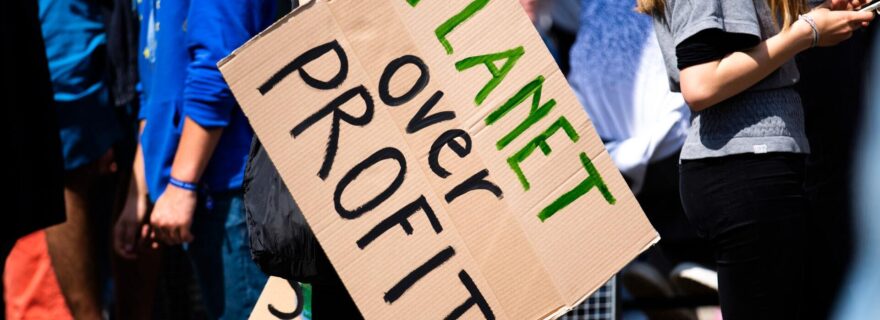The youth climate movement and the resuscitation of climate science
What can the youth climate movement do to resuscitate climate science in order to ensure the dignified life of present and future generations?
As Justice Staton points out in Juliana v. U.S., ‘if an asteroid were barrelling toward earth,’ the government wouldn’t decide ‘to shut down our only defences’. Climate change is that asteroid, and climate science is our only defence.
Climate science has undergone rapid advances. Indeed, World Meteorological Organization Secretary-General Petteri Taalas states that: ‘Technological advances now make it possible to track greenhouse gas emissions back to their sources as a means of providing targeted reduction efforts.’ Yet climate science is on life support. How can this be?
The eco-conscious public privately yawn at Greta Thunberg’s ‘listen to the scientists’ refrain, but systematic bias against science and the expertise of scientists continues to undermine climate mitigation and adaptation, warranting other youth climate activists to double down on her pro-science rallying cry. One manifestation of this anti-science bias is climate change scepticism or denial; another is acknowledging, or even embracing, the efficacy of climate science yet ‘pressing ahead toward calamity’. It is the latter manifestation of this anti-science bias that fundamentally threatens the utility of climate science
The problem: politics as usual
Today’s youth climate activists acutely understand the drawbacks of politics as usual. Nathan Baring, who six years ago, at age 15, began as a youth plaintiff in Juliana v. the United States, explains that through a magician’s sleight of hand, policymakers draw a false equivalence between standards adopted in politically negotiated agreements and a scientifically-derived safe and healthy climate.
The evidence overwhelmingly supports Baring’s contention. The Paris Agreement, a binding international treaty on climate change, aims to limit long-term rises in global temperatures to 1.5- 1.99 degrees Celsius compared with pre-industrial levels. Even at an increase of 1.5 degrees Celsius, the impact of warming on human civilization will be catastrophic, as Spratt and Dunlop, the Breakthrough National Centre for Climate Restoration, highlight: ‘Just for starters it would mean coral systems reduced to fragments, a multi-meter sea-level rise on the way, Pacific nations drowned, more lethal extreme weather, and glaciers in Antartica passed their tipping point.’ These impacts will be harshest upon those living in low- and middle-income countries, home to 85% of the world’s children.
The promise of climate science
Pushing the envelope, one can reasonably inquire, have politically negotiated agreements done more harm than good? Put another way, do the Paris Agreement obligations unwittingly disincentivise the implementation of climate mitigation and adaptation strategies sufficiently ambitious to maintain life as we currently know it?
The youth participating in the climate movement reframe this issue by utilising science, not politics, to redress intergenerational injuries to the climate. They link science with fundamental rights and litigate their claims strategically in the courts or with quasi-judicial bodies, such as the UN Committee on the Rights of the Child.
In Juliana, Baring and his twenty fellow youth plaintiffs requested that the District Court order US government agencies to follow the science in developing a plan to ensure that, by 2100, the atmospheric CO2 was less than 350 parts per million. District Court Judge Aiken denied the government’s motion to dismiss the youth’s claims, declaring that ‘the right to a (science-based) climate system capable of sustaining human life is fundamental to a free and ordered society’. On the government’s interlocutory appeal, Ninth Circuit Justice Hurwitz, writing for the majority of judges, agreed that the youth plaintiffs got the climate science right: ‘[W]e are on the eve of destruction,” and the youth plaintiffs “presented compelling evidence that climate change has brought that eve nearer.’ What is disconcerting is that in the majority’s 2-1 decision to dismiss the case, climate science, and ultimately the dignified life of the youth plaintiffs, took a backseat to political considerations: ‘the plaintiffs’ case must be made to the political branches,’ the same branches the majority states ‘may have abdicated their responsibility to remediate the problem’. In her dissent, Acting Ninth Circuit Justice Staton had harsh words for the majority’s decision to devalue climate science: ‘Plaintiffs’ claims are based on science, specifically, an impending point of no return. If plaintiffs’ fears, backed by the government’s own studies, prove true, history will not judge us kindly.’
Using climate science to forge a new chapter in climate history
Compromising the future of our children through politically negotiated climate agreements is not an option. In order to tackle the climate crisis and secure the dignified life of present and future generations, youth climate activists must follow the example of the Juliana plaintiffs in relentlessly pursuing science-based strategic litigation.
Celebrating World Environment Day on 5 June 2021, many will have raised a toast to the Committee on the Rights of the Child and the European Court of Human Rights in connection with their upcoming decisions in, respectively, Sacchi et. al. v. Argentina et. al. and Agostinho v. Portugal and 32 Other States: ‘May the spirit of CRC Article 12 prompt you to follow the lead of the youth climate litigants in resuscitating climate science in order to secure a safe and healthy climate for all.’
This blog is based on the author’s thesis on climate change and children’s rights written for the Advanced LLM in International Children’s Rights for which he received the 2020 Jaap Doek Prize.



0 Comments
Add a comment